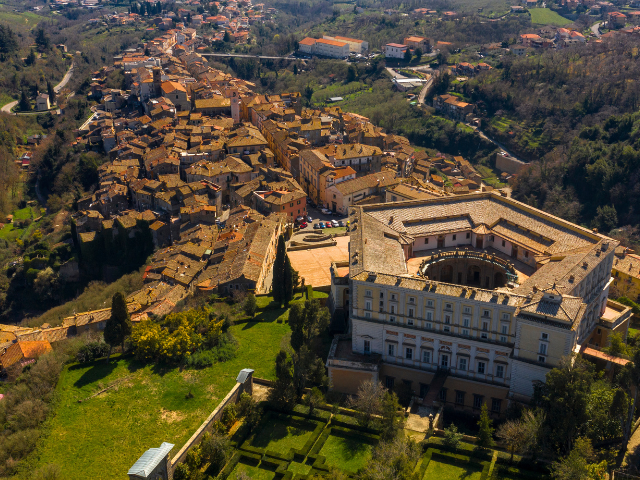Castello dell'Abbadia and Archaeological Museum of Vulci
A guide to visit the Archaeological Museum of Vulci in the Castello dell'Abbadia: history, useful information on how to get there and what to see, prices and guided visits.Within the vast area of Vulci Archeological Park, there is the Medieval Castello dell'Abbadia, house ot the Archeological Museum, accessible throught the amazing Ponte del Diavolo from where you can enjoy some breathtaking panoramic views!
If you have already visited the archeological park and the necropolis you can't absolutely miss this wonder, a perfect place to deepend into Etruscan history and art and take some unforgetable panoramic pictures!
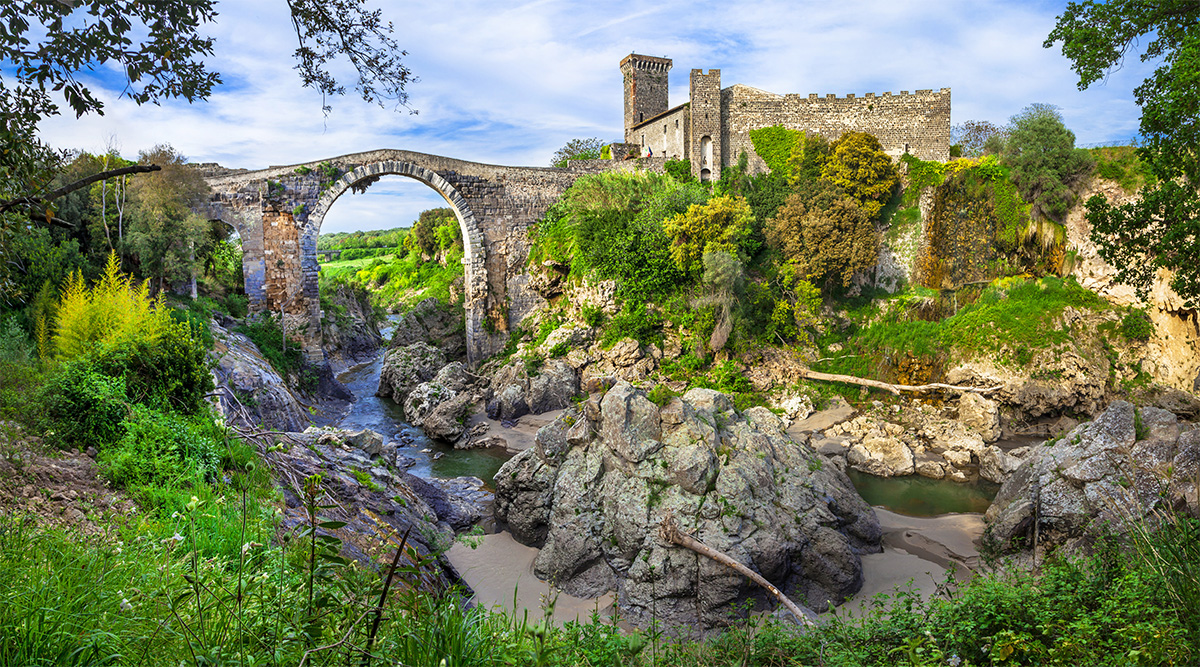
Castello dell'Abbadia and Ponte del Diavolo in all their splendour

Entrance to the Castello dell'Abbadia in Vulci
A bit of history
Built in Medieval times (12th century) by Cistercian monks on top of an old abbey devoted to San Mamiliano, the Castello dell'Abbadia, became over time into an important fortress and shelter for pilgrims and travellers, including the Knights Templar.
The Ponte del Diavolo, instead, has even older roots: the tuff main towers date back to Etruscan times while the tree-arched structuredates back to the 1st century BC.
Originally, not only did the bridge allow to cross the river, but it also bore the Roman acqueduct that brought water to the city of Vulci. Later, in Medieval times, it was adapted to the defensive needs of the castle.
Through Medieval times the Castle of Vulci was disputed by the Aldobrandeschi and Di Vico families and the Town of Orvieto.
In the 16th century the castle was in the hands of Alessandro Farnese, future Pope Paul III, and it became the customs of the Papal State, thanks to the closeness to the Gran Duchy of Tuscany.
In 1808 the castle was bought by Luciano Bonaparte and in 1853 it became property of Alessandro Torlonia. Finally, after decades od decadence and abandonment the castle was bought by the Italian State (in the 60s). After restoration works by the National Trust, the castle became house of the National Museum of Vulci, open to public in 1975.
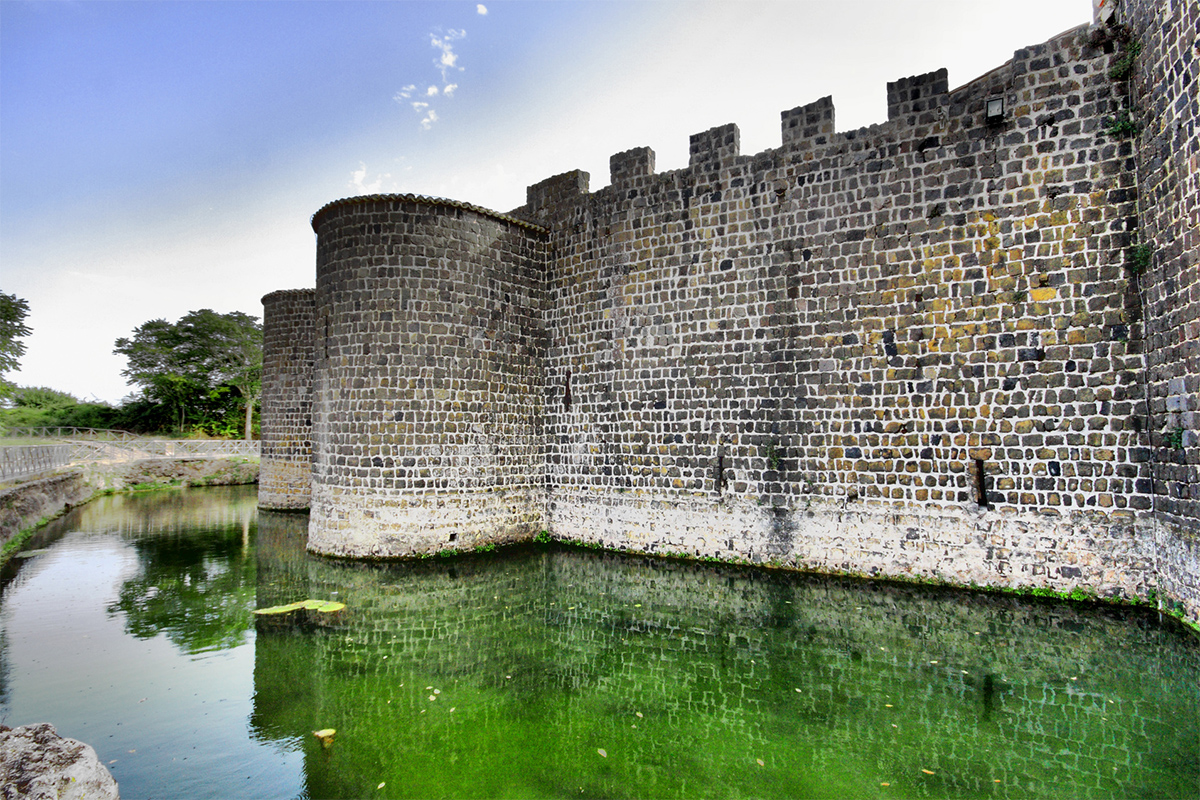
Moat surrounding the Castello dell'Abbadia in Vulci
Archaeological Museum of Vulci
Within the Archaeological Museum of Vulci you will see many finds from the Necropolis (including the François Tomb) and from the whole area of the park.
The research conducted in recent decades and the important discoveries that followed, have led to a new staging of the museum, more adherent to current museographic guidelines.
The room on the ground floor was assigned to temporary exhibitions while the upper floor preserved the function to hold the permanent exhibition of the museum with materials which cover an arc of time that goes from the Bronze Age to the early Iron Age up to the 3rd and 2nd century B.C.
Inside the museum are hosted rich endowments of the tombs of Vulci, elegant bucchero Etruscan vases and refined figured Greek vases.
Some of the most significant works include the vases (hydria)* attributed to the Painter of Micali and a vascular endowment found in the Tomb of Panatenaica, in the Necropoli dell’Osteria.
*Hydria is a Greek vase primarily used for transporting water, but also as cinerary urn or as a container for votes.
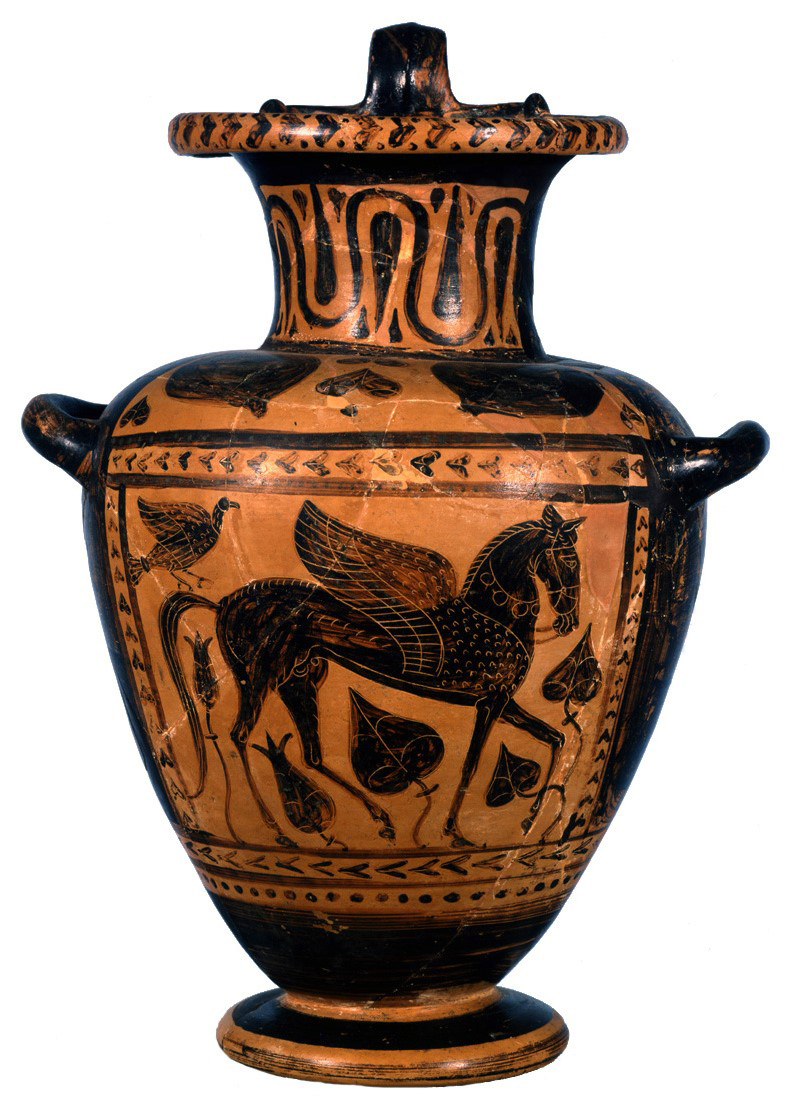
Archaeological Museum of Vulci , Hydria by the Painter of Micali
The exhibition also allows you to appreciate the monumental rooms of the ancient fortress and privileges the unity of the contexts, always displayed in their entirety and able to document all the phases of use of the tombs. Especially for ceramic productions, it offers a chronologically and typologically complete panorama of the productive activities and trade of the ancient center, from the late Bronze Age to Romanization.
Finally, several architectural and decorative elements of tombs of the Etruscan and Roman necropolis are found in the outer courtyard of the castle.
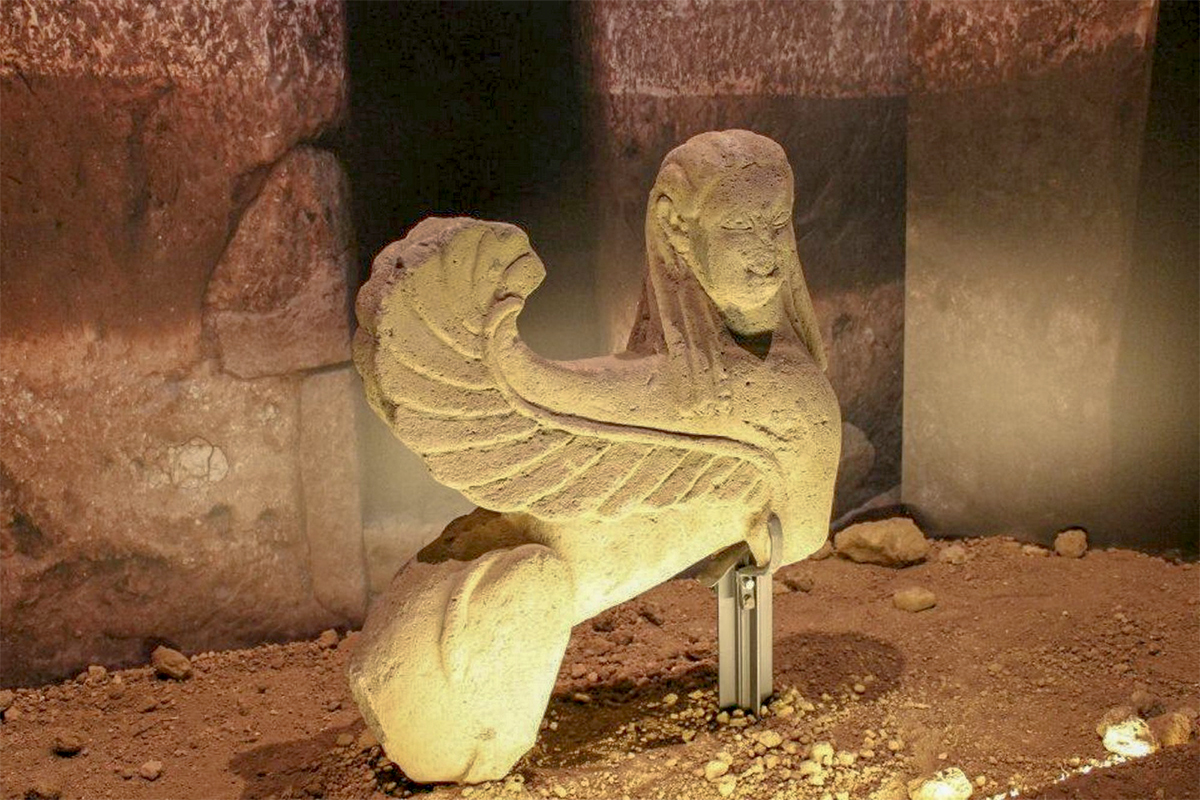
Archaeological Museum of Vulci, Tomb of the Sphynx - Photo by www.visitmontaltodicastro.it
Useful information
Archeological Museum of Vulci
Vulci
01011 Canino VT
Telephone: +39 0761437787
- HOW TO GET THERE
Castello dell'Abbadia is about 1 km away from the ticket office of the Archeological Park.
From the Port of Civitavecchia:
By car: to get to Vulci Archeological Park from the Port of Civitavecchia by car you only ned to exit at Raccordo Civitavecchia-Viterbo/E840 and continue on SS1 Via Aurelia/E80 towards SP105 Montalto di Castro until you reach Strada Provinciale 105 until final destination.
By train: from Civitavecchia Railway Station take the first train bound for Montalto di Castro (about 23 minutes) and from there, with prior reservation, get on the free shuttle bus that will take you straight to the park. The shuttle is also availabale for small groups and needs to be booked in advance calling the ticket office: +39 0766 89298.
By car from the North: follow the road Livorno-Grosseto, then S.S. 1 Aurelia until the exit of Montalto di Castro (km 109). Enter the S.S.1 Aurelia direction Nord and exit at Vulci at Km 111. Follow the S.P. del Fiora, the della Badia (13 Km)
By car from the East: highway Orte-Viterbo until Viterbo, then take road Viterbo-Tuscania-Montalto di Castro. At Montalto di Castro take the S.S.1 Aurelia direction Nord and exit at Vulci at Km 111. Follow the S.P. del Fiora, the della Badia (13 Km)
- TIMETABLES
- Every day from 8:30 to 19:30Monday: closed
- PRICES
- Full: 2€Reduced: 1€Free admission first Sunday of every month .



 PORT MOBILITY CIVITAVECCHIA
PORT MOBILITY CIVITAVECCHIA








